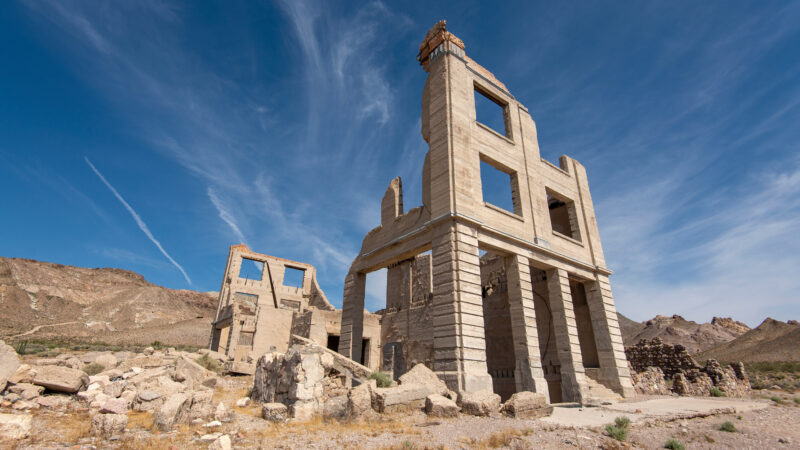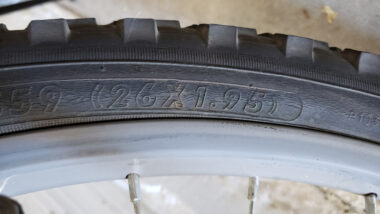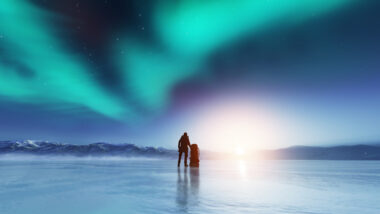Table of Contents Show
The West is littered with ghost towns that tell stories of the gold rush and mining boom of the late-19th and early-20th centuries.
Although most of these towns only saw success for ten years or less, their importance to American history is significant. One such town is the Rhyolite ghost town located in southwestern Nevada.
Let’s learn about its story and how it went from boom to bust in just a few years.
Where Is the Rhyolite Ghost Town?
The Rhyolite ghost town lies about 120 miles northwest of Las Vegas in Nye County, Nevada. It sits near the Nevada-California border at 3,819 feet in elevation.
Three ridges border it, with Sawtooth Mountain rising to 6,000 feet about 3 miles northwest of the ghost town. To the south is the Amargosa Desert. You can access the ghost town from Highway 374, which runs from Beatty, Nev., to the California border.
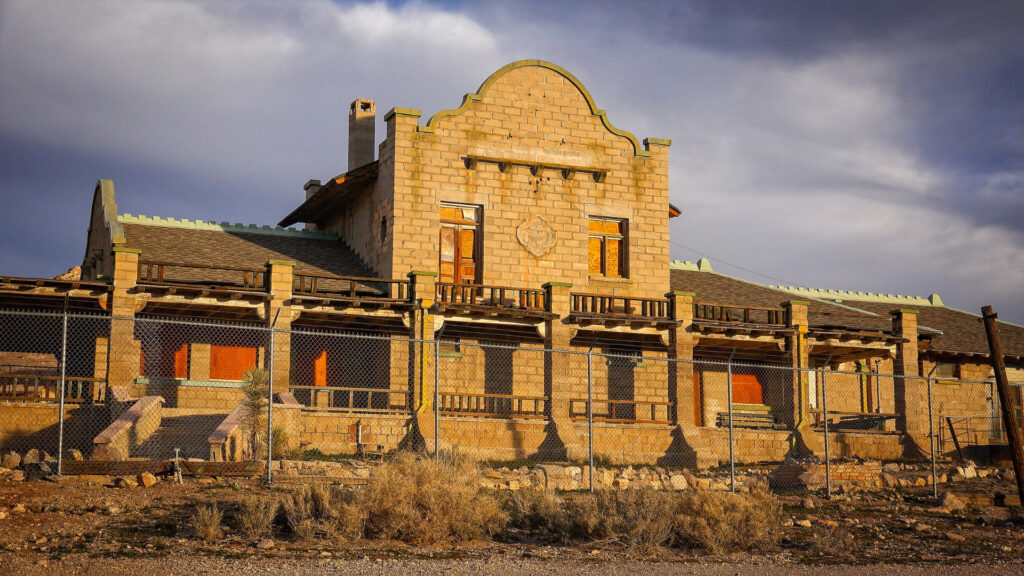
Why Did People Flock to Rhyolite in the 20th Century?
In the early 1900s, thousands of Americans hoping to strike it rich flocked to the Bullfrog Mining District. On Aug. 9, 1904, someone found gold on the south side of a Nevada hill, later named Bullfrog Mountain.
The ore samples suggested values of $3,000 a ton, equating to $90,000 a ton in 2021. This area became known as the Bullfrog Mining District.
Rhyolite sat near the region’s biggest producer, the Montgomery Shoshone Mine. So the population skyrocketed with miners and developers seeking fortune.
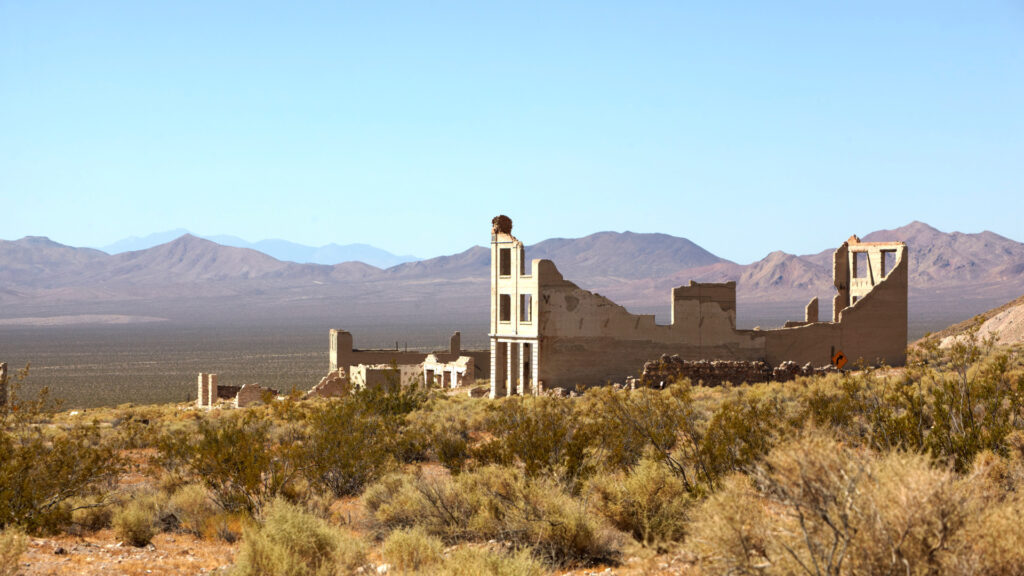
How Prosperous Was Rhyolite During the Boom Years?
Chares Schwab, a business tycoon, bought the Montgomery Shoshone Mine and heavily invested in Rhyolite’s infrastructure. The town benefited from its proximity to the mine with piped water, electric lines, and railroad transportation.
During the boom years of 1906 to 1908, Rhyolite had electric lights, water mains, telephones, newspapers, a hospital, a school, an opera house, and a stock exchange.
Although no one knows the peak population, scholars believe the town had 3,500 to 5,000 residents. But by 1916, Rhyolite essentially became a ghost town.
What Role Did Charles Schwab Play in the Prosperity of Rhyolite?
In February 1905, the Montgomery Shoshone Mine produced ores assayed as high as $16,000 a ton, which would equate to $483,000 a ton in 2021. Rhyolite was home to just a handful of people in 1904, but by 1905, there were a couple thousand. Charles Schwab bought the mine in 1906.
Schwab expanded the operation of the Montgomery Shoshone Mine substantially. He hired more workers, opened new tunnels, and built a huge mill to process the ore.
In addition, he contracted with the Las Vegas and Tonopah Railroad to run a spur line to the mine. Eventually, three railroads ran through Rhyolite. The town’s boom years are partly due to this tycoon’s savvy business decisions.
Keep in Mind: If you want a taste at what RV life is like, then you need to read these books!
What Happened to Cause the Bust Just a Few Years Later?
However, Rhyolite’s success was short-lived. In 1908, shares declined dramatically from $23 to 75 cents. By 1909, they discovered no new ore, and by March 1911, the mine had shut down.
In addition to the decline of the Montgomery Shoshone Mine, Rhyolite took a hit from the 1906 San Francisco earthquake. After the disaster, the railroad services were diverted.
Then the 1907 financial panic, when the government restricted funding for mines, further led to its downfall.
The 1910 census showed less than 700 people still living in the town. Water and electricity were finally turned off in 1916, leaving Rhyolite a ghost town. Only 14 residents remained by the 1920 census. And the last resident, a 92-year-old man, died in 1924.
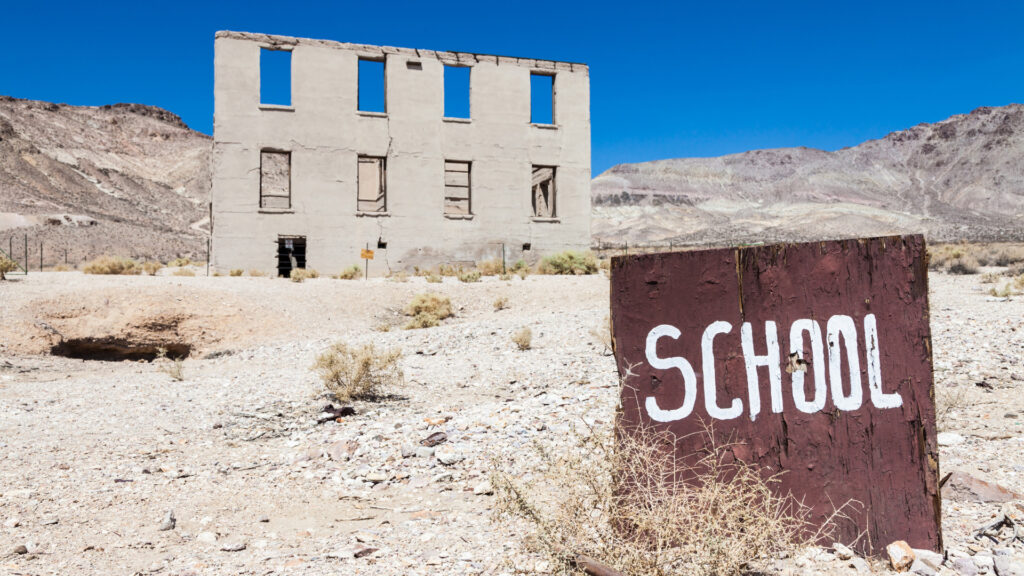
Who Manages the Rhyolite Ghost Town Now?
The Bureau of Land Management (BLM), a department of the U.S. Interior, now manages the Rhyolite ghost town. The Tonopah Field Office monitors the land.
You can visit the Rhyolite ghost town by driving four miles west of Beatty, Nev., on Highway 374. However, guests must go during the day as the town is off-limits after sunset. You can visit for free since it is public land.
Keep in Mind: The next ghost town to your bucket list is the Ghost Town of Terlingua, Texas!
What Can You See at the Rhyolite Ghost Town?
Cook Bank Building, one of the most photographed buildings in the West, is a popular tourist spot.
You’ll also see ruins of other buildings in the Rhyolite ghost town, including the schoolhouse that faces the Amargosa Valley desert. The stunning view of the mountains against the desert backdrop hasn’t changed in a hundred years.
Visitors can also see the HD & LD Porter store, owned by two brothers, which sold groceries, clothing, mining supplies, and other things during the boom years.
You can also see the Bottle House in Rhyolite, built in 1905. Approximately 50,000 glass bottles, mostly beer bottles, were used to construct the walls. Paramount Pictures restored the Bottle House in January 1925. This is another popular tourist spot.
Is a Visit to the Rhyolite Ghost Town Worth It?
If you’re interested in the old mining towns of the West, Rhyolite is worth a visit. It’s also near Death Valley National Park, so it’s a stop you can easily add to your Southern California itinerary.
The Rhyolite ghost town isn’t a place you’ll explore all day long, but it’s a fun place to walk around and imagine what life would have been like in the gold rush heyday of the West.
So the next time you explore Death Valley or drive from Las Vegas to Carson City, stop at the Rhyolite ghost town. Check out the bank, schoolhouse, Porter store, bottle house, and the beautiful landscape surrounding what used to be a thriving mining town in Nevada.
Do you enjoy visiting the ghost towns of the West?




